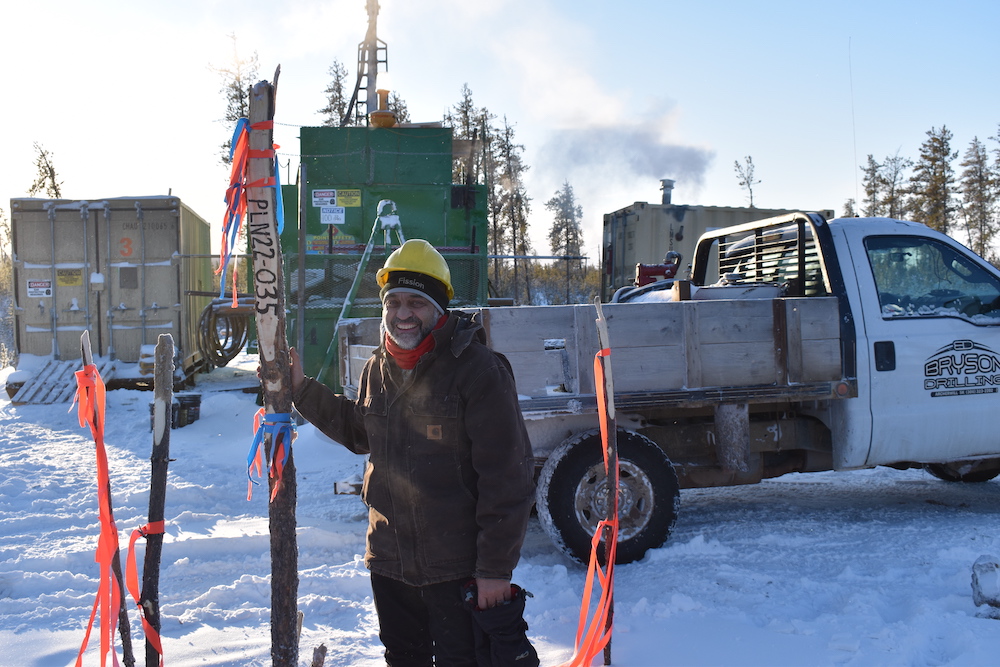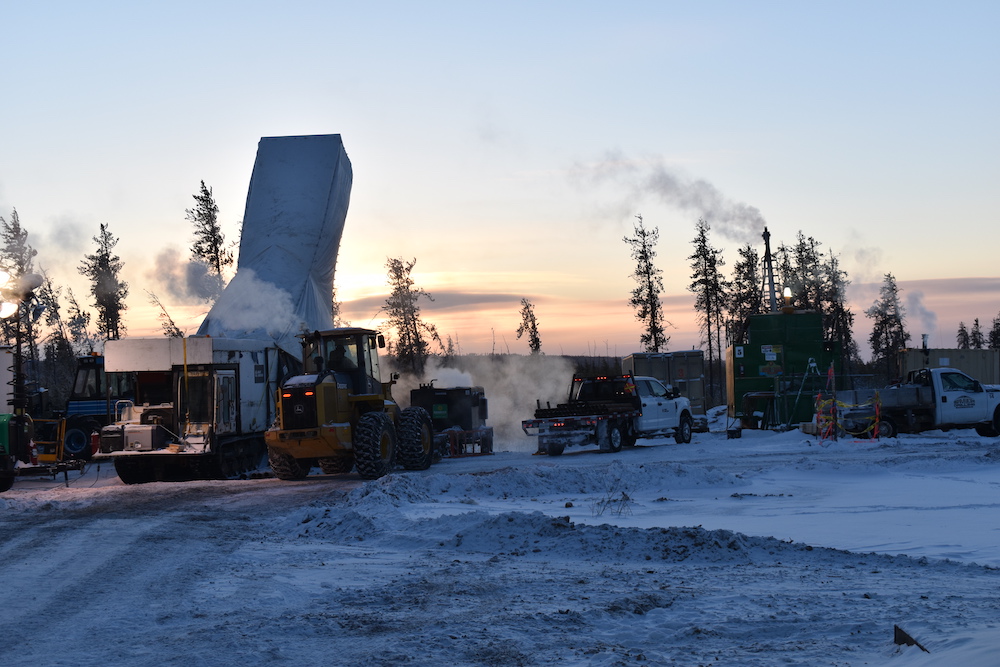JV Article: F3 advances Athabasca’s latest uranium find


F3 Uranium (TSX: FUU) has made the latest high-grade uranium discovery in Canada’s prolific Athabasca Basin.
The company struck paydirt last November when it drilled an intersection of 15 metres grading 6.97% uranium oxide (U3O8) on the JR zone of its PLN property on the western part of the basin.
Since then, the project’s potential has only got bigger. Combined with a rally in uranium prices since early 2022, the discovery has turned F3 into one of the best-performing stocks of the Toronto Stock Exchange over the last year.
But given the size of its discovery compared to other deposits in the region, F3 is hopeful that this is just the beginning.
Located in northern Saskatchewan, the Athabasca basin is known around the world for its high-grade uranium resources. Mines in the region account for around 15% of the global supply of uranium.
President Raymond Ashley and CEO and chairman Dev Randhawa are veterans of the Athabasca scene, having already made two major discoveries in the area over the last 15 years.
Their first company Fission Energy discovered the J zone deposit (indicated resources of 209,000 tonnes of 2.0% U3O8) in 2008 and was later acquired by Denison Mines (TSX: DML; NYSE: DNN), a leading uranium developer.
Six years later, their second company Fission Uranium (TSX: FCU) discovered the Triple R deposit (indicated resources of 2.7 million tonnes at 1.94% U3O8). A positive feasibility for the project was completed in January.
Created from exploration properties spun off from Fission Uranium, F3 Uranium is their third bet on the region’s potential.

The exploration team, led by Ashley, first found evidence of uranium on the PLN property shortly after the Triple R discovery in 2014 and went back again in 2019.
“We recognized early on that the geology and the alteration in that structure was quite similar to the Triple R deposit itself,” said Ashley, then VP Exploration.
But the vagaries of the volatile uranium market meant that it was not until last year that the company could raise enough money to resume drilling. The company organized ground geophysics over the northern untested 900-metre of the structure, coined the A1 Main Shear Zone, to define drill targets. The team was able to prove their hypothesis with one of their first holes in the zone and at a scale which suggested that they could be on the edge of something big.
For example, the widths are comparable with those at Fission Uranium’s Triple R, and NexGen Energy’s (TSX: NXE) Arrow deposit (measured and indicated resources of 3.8 million tonnes at 3.1% U3O8) 25 km to the southeast.
And as well as width, the drill hole hit a high-grade core of five metres grading 18.18% U3O8, a sign that it could be in the middle of a significant hydrothermal fluid system.
“We’ve got the width, it’s shallow and it’s got super-high grades. Now the question is how big is this thing?” posits Ashley.
The discovery comes at a critical moment for the global uranium market.
After 10 years in the doldrums, triggered by the Fukushima accident in Japan, interest in the nuclear fuel is heating up again, driven by the higher energy caused by Russia’s invasion of Ukraine and the potential for nuclear energy to reduce carbon emissions.
Spot uranium prices have risen around 15% since the start of the year, bolstered most recently by concern that a military coup in Niger, a major supplier to Europe’s nuclear industry, could hit production.
With increased interest from investors in nuclear power, F3 has been able to return to the market several times since last year’s discovery to fund additional exploration.
An $8-million drill program over last winter allowed them to extend the strike length to 105 metres.
“The fact that we hit another beautiful intersection 60 metres away from the discovery hole again with that super strong high-grade core allows us to get a handle for the shape and orientation of the mineralization,” Ashley notes.
The team has not only been drilling to expand the known JR zone but also along the strike in the search of more mineralized zones.
Other uranium finds in the basin frequently consist of several areas of mineralization spread out over a relatively wide area. Fission Uranium’s Triple R project consists of five separate zones of uranium mineralization spread over a strike length of 3.2 kilometres.
With this in mind, F3 has begun looking for additional mineralization along the A1 conductor and the recently discovered adjacent and parallel A1B conductor, which together stretch for a total of 3.7 km kilometres.
“There’s clearly potential for other mineralized pods along this conductor complex, and for an unconformity or sandstone component,” Ashley says.
As it has stepped up exploration, F3 has experimented with new drilling techniques that give it more bang for its buck. This summer, the company has deployed a sonic drill to advance casing through the Athabasca’s difficult overburden of sand and gravel before a diamond drill is used to extract core. With one sonic drill blazing the trail for two diamond drills, the company is set to drill a total of 40 holes this summer instead of the 30 originally planned in its $12-million summer budget. Drilling so far this summer has extended the JR Zone in strike length by a further 50% to 156 metres. Hole 68, updip from hole 60, intersected 18 metres of 8.8% U3O8, the highest grade-thickness intercept to date.

The discovery has transformed its profile in the eyes of investors, lifting its market capitalization from around $20 million to $140 million over the last year.
The company has now announced a further $20 million financing which will fund exploration through 2024. Planned work includes expansion drilling to define the size of the JR Zone and exploration drilling for new areas of mineralization along the A1 and A1 B shear zones.
Ashley attributes the team’s success to its winning track record and an ambition to keep making new finds.
“It’s the experience we had with the two uranium discoveries and the persistence to go back when we saw the right signs,” the executive notes.
The preceding Joint Venture Article is PROMOTED CONTENT sponsored by F3 Uranium and produced in co-operation with The Northern Miner. Visit: www. for more information.
Comments